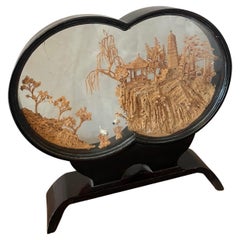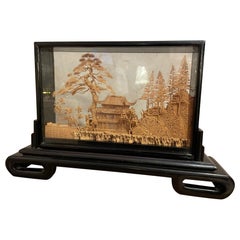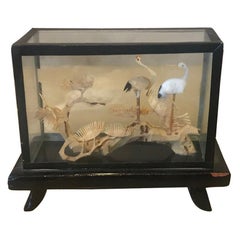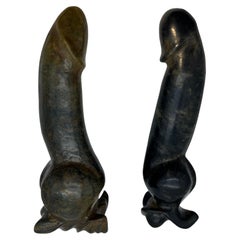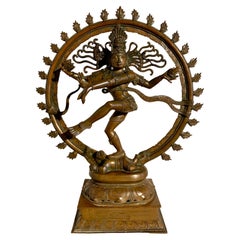J & Jo Degottex Sculptures and Carvings
to
3
3
3
3
2
1
1
3
3
3
3
3
3
3
3
20th Century Chinese Cork Diorama Heart Shape, 1950s
Located in LEGNY, FR
Beautiful 20th century rounded Chinese Cork diorama from the 1950s.
Finely carved decoration in its glass case and black lacquered base.
Careful and delicate work of miniature sculpture, representing a Chinese landscape view, a pagoda in a traditional garden, surrounded by conifers and rocks.
Asian traditional cork sculpture made in China...
Category
20th Century Chinese Sculptures and Carvings
Materials
Wood, Cork
$428 Sale Price
20% Off
Oversized Antique Chinese Cork Diorama, 1940s
Located in LEGNY, FR
Beautiful oversized antique Chinese cork asian garden diorama from the 1940s.
Stamp of the Chinese manufacturer. Blackened wood frame.
Very nice quali...
Category
Vintage 1940s Chinese Sculptures and Carvings
Materials
Cork
$571 Sale Price
20% Off
20th Century Chinese Cork Diorama, 1950s
Located in LEGNY, FR
Beautiful 20th century rectangular Chinese Cork diorama.
Finely carved decoration in its glass case and black lacquered base.
Careful and delicate work ...
Category
Vintage 1950s Chinese Figurative Sculptures
Materials
Cork
$247 Sale Price
20% Off
Related Items
20th Century Chinese Polished Carved Stone Sex Toys
Located in North Miami, FL
A pair of 20th century Chinese polished carved stone sex toys.
Category
20th Century Chinese Sculptures and Carvings
Materials
Stone
Large Bronze Dancing Shiva, Nataraja, 19th/20th Century, South India
Located in Austin, TX
A heavy and well cast South Indian bronze figure of Shiva Nataraja, or Shiva as Lord of the Dance, in the Chola style, late 19th or early 20th century, India.
Shiva is portrayed here in his form as Nataraja, the Lord of the Dance. An iconic and powerful image, Shiva is portrayed engaged in his dance of creation, protection, and destruction, bringing together all his aspects into one sublime form.
Shiva dances ecstatically, facing the viewer with his body twisted, his long locks of hair streaming out around him, his four arms in action, with one leg raised, the other stomping on the dwarf demon Apasmara, who represents spiritual ignorance.
In one hand he holds a damaru, or ritual drum...
Category
Antique Early 1900s Indian Sculptures and Carvings
Materials
Bronze
Pair of Chinese Bronze Deity Figures, 20th Century
Located in Belmont, MA
Pair of Chinese bronze figures of deities standing on dragons. The two sculptures were made in the 20th century. They represent the Tao gods Lu Xing and Fu Xin...
Category
Vintage 1980s Chinese Chinese Export Sculptures and Carvings
Materials
Bronze
$1,000 Sale Price / set
47% Off
H 21 in W 8.5 in D 12.5 in
20th Century Italian Etruscan Bacchus Terra Cotta Head - Vintage Statuette
Located in West Palm Beach, FL
A vintage Tuscan clay head of Dionisio Etrusco Bacco made of hand crafted terra cotta, in good condition. Minor fading, scratches due to age. Wear consistent...
Category
Early 20th Century Italian Art Deco Sculptures and Carvings
Materials
Terracotta
$1,700
H 5.75 in W 4 in D 4.5 in
Antique Chinese Carved Soapstone Spill Vase
Located in Forney, TX
An exceptionally hand-carved antique Chinese soapstone spill vase - spill holder (see below), profusely decorated and intricately detailed naturalistic sc...
Category
20th Century Sculptures and Carvings
Materials
Soapstone
Late 19th/Early 20th Century Carved Jade Mythical Bird Carving
Located in Hudson, NY
This nicely carved bird figure is done in an 18th-century style but is from the very late 19th century to early republic period. The stone is a soft mellow celadon green with dark br...
Category
Early 20th Century Chinese Sculptures
Materials
Jade
Large Scale Antique Chinese Carved Cork Diorama in Ebonised Glass Display Case
Located in Llanbrynmair, GB
A large scale Chinese carved cork diorama in its original glass display case, early 20th Century piece, Circa 1910.
The scene is of a Chinese villa...
Category
Early 20th Century Chinese Chinese Export Sculptures and Carvings
Materials
Cork
$1,248 Sale Price
33% Off
H 13.88 in W 21.25 in D 9.25 in
Antique Chinese Cork Diorama
Located in Douglas Manor, NY
3-716 Chinese diorama made of vintage glass and lacquered wood.
Careful delicate work of miniature sculpture representing a Chinese landscape view, a ...
Category
Vintage 1940s Sculptures and Carvings
Materials
Cork
Antique Oversized Chinese Cork Diorama
Located in Douglas Manor, NY
Antique Chinese large cork diorama depicting temple and garden scene.
Category
Vintage 1940s Sculptures and Carvings
Materials
Glass, Hardwood, Cork
Early 20th Century Sandstone Buddha Head, Northern India
Located in Nantucket, MA
A lovely sandstone Buddha head on wooden base, early 1900's, Utttar Pradesh, Northern India. The hand-carved features include the typical snail-s...
Category
Early 20th Century Asian Sculptures and Carvings
Materials
Sandstone
20th Century Chinese Cork Diorama, circa 1950s
Located in Miami, FL
Beautiful 20th century oval Chinese cork diorama.
Finely carved decoration in a glass case and black lacquered base.
Chinese landscape view, a pagoda in a traditional garden featur...
Category
Mid-20th Century Chinese Figurative Sculptures
Materials
Cork
Oversized Porcelain Chinese Guan Yin Statue
Located in MC Leansville, NC
This Oversized Porcelain Chinese Guan Yin Statue is a magnificent ceramic representation of the revered bodhisattva, known for her compassion and mercy. This elegantly sculpted figur...
Category
Mid-20th Century Chinese Chinese Export Sculptures and Carvings
Materials
Clay
